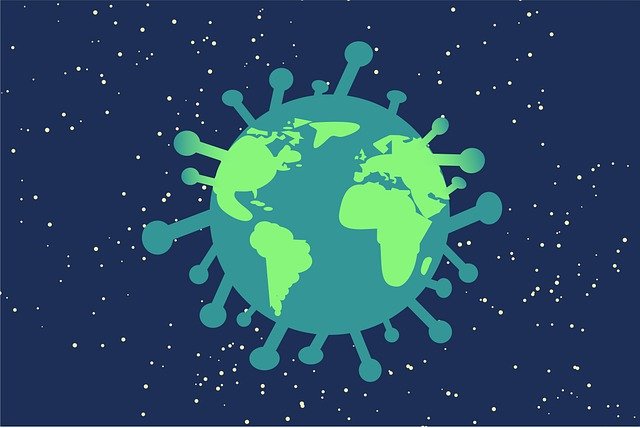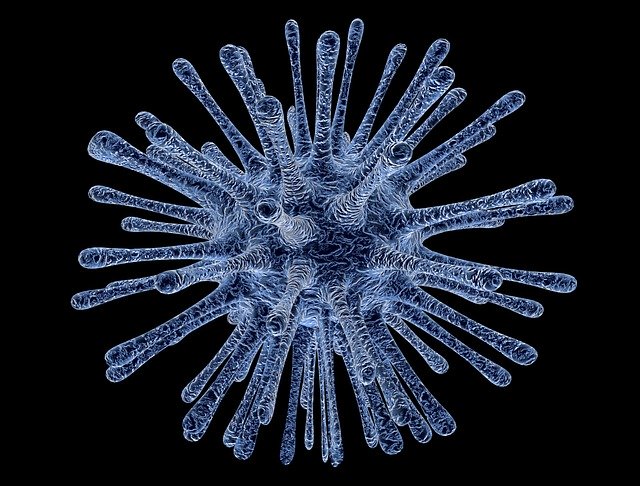Corona-virus survival in water
 Research indicates that other coronavirus strains, such as SARS, can survive 12 days in room temperature tap water, two to three days in room temperature wastewater, and much longer in both at cooler temperatures, according to Dr. Ian Pepper, PhD, director of the University of Arizona Water and Energy Sustainable Technology (WEST) Center.
Research indicates that other coronavirus strains, such as SARS, can survive 12 days in room temperature tap water, two to three days in room temperature wastewater, and much longer in both at cooler temperatures, according to Dr. Ian Pepper, PhD, director of the University of Arizona Water and Energy Sustainable Technology (WEST) Center.
Although infectious droplets may contaminate water and the virus has been detected in wastewater, experts agree that when it gets into large bodies of water — like lakes, rivers and oceans — the concentration of the virus would be so diluted that it would be difficult to contract it.
According to the Centers for Disease Control and Prevention, there’s no evidence that people can become infected through recreational swimming, and “the risk of COVID-19 transmission through water is expected to be low.”
Interesting fact: Coronaviruses were first discovered in the 1930s when an acute respiratory infection of domesticated chickens was shown to be caused by infectious bronchitis virus. Human coronaviruses were discovered in the 1960s.
Virus survival in water
 Viruses need a suitable environment to survive in. There are many characteristics that control the survival of viruses in water such as temperature, light, pH, salinity, organic matter, suspended solids or sediments, and air–water interfaces.
Viruses need a suitable environment to survive in. There are many characteristics that control the survival of viruses in water such as temperature, light, pH, salinity, organic matter, suspended solids or sediments, and air–water interfaces.
Temperature
Temperature has the highest effect on virus’s survival in water since lower temperatures are the key to longer virus survival. For instance, an article published in 2018 noted that it takes one year for certain viruses including poliovirus and echovirus to decrease by a 5 log unit at a temperature of 4°C, while it takes only a week to obtain same result at a temperature of 37°C (human body temperature). The rate of protein, nucleic acid denaturation and chemical reactions that destroy the viral capsid are increased at higher temperatures, thus viruses will survive best at low temperatures. Hepatitis A, adenoviruses and parvoviruses have the highest survival rate in low temperatures amongst enteric viruses
Light
Ultraviolet light (UV) is the light in sunlight and can inactivate viruses by causing cross-linking of the nucleotides in the viral genome. Many viruses in water are exterminated in the presence of sunlight. The combination of higher temperatures and more UV in the summer time corresponds to shorter viral survival in summer compared to winter. Double stranded DNA viruses like adenoviruses are more resistant to UV light inactivation than enteroviruses because they can use their host cell to repair the damage caused by the UV light.[4]
Visible light can also affect virus survival by a process called photodynamic inactivation but the length and intensity of the light exposure can change the inactivation rate.[4]
pH
The pH of most natural water is between 5–9. Enteric viruses are stable in these conditions. On the other hand, many enteric viruses are more stable at pH 3-5 than at pH 9 and 12. Enteroviruses can survive at pH 11–11.5 and 1–2, but for only short periods. Adenoviruses and rotaviruses are delicate to a pH of 10 or greater and leads to inactivation.[4]
Salts and Metals:
In a general perspective, viruses don’t survive in areas with high concentration of salt. Thus, viruses can live longer in a freshwater habitat than water bodies with high salt concentration. It is also known that certain heavy metals have are toxic to viruses. [11]
Interface.
Some types of coliphages (a type of bacteriophage) are inactive in an of air-water-solid interface. This is due to the unfolding of the viruses’ protein capsid (which is a crucial component for infecting the host). Aggravation of this effect is seen when the ionic strength of the solution increases[5]
Aggregation
Aggregation is the one of the most known methods for the survival of viruses. In a liquid environment, viruses tend to form a clump (aggregation). This aggregation result in a reduced rate of virus inactivation promptly showing that viral particles that do not aggregate are more easily destroyed. It has also been proven that aggregation may form spontaneously or may result by nucleation on particles of water.[10]
Virus removal from water
Water that is intended for drinking should go through some treatment to reduce pathogenic viral and bacterial concentrations. As the density of the human population has increased the incidence of sewage contamination of water has increased as well, thus the risk to humans from pathogenic viruses will increase if precautions are not taken.[4]
Scientific studies suggest that the most common viruses found are caliciviruses, astroviruses and enteric viruses. Laboratories are still looking for improved methods to detect these pathogenic viruses. Reducing the amount of viruses in drinking water is accomplished by various treatments that are typically part of drinking water treatment systems in developed countries.[4][12]
Water purification of surface water (water from lakes, rivers, or reservoirs) typically utilizes four treatment stages: coagulation and flocculation, sedimentation, filtration, and disinfection. The first three stages remove mainly dirt and larger particles, although filtration does reduce the number of viruses and bacteria in the water the number of pathogens present after filtration is still considered too high for drinking water. Purification of water from underground aquifers, called ground water, may skip some of these steps as ground water tends to have fewer contaminants than surface water. The last step, disinfection, is primarily responsible for the reduction of pathogenic viruses to safe levels in all drinking water sources. The most common disinfectants used are chlorine and chloramine. Ozone and UV light can also be used to treat large volumes of water to remove pathogens.[12]
In an article published in 2010, it was determined that nano particles of silver could significantly inactivate the activity of some water viruses. When 5.4 ml of the nano particles of silver was added to a water virus, its activity decreased by 4 log.[13]
References:
[4] Bosch, Albert, ed. (2007). Human viruses in water. Amsterdam: Elsevier. ISBN 9780080553276.
[5] Bosch, Albert (27 July 1998). “Human enteric viruses in the water environment: a minireview”. INTERNATL MICROBIOL.
[10] Pinon, Anthony (10 January 2018). “Survival of Viruses in Water”. Karger.com. Retrieved 5 May 2020
[11] Bosch, Albert (2007). Human Viruses In Water: Perspective in Medical Virology. ProQuest Ebook Central: Elsevier Science & Technology. p. 94. ISBN 9780444521576.
[12] “Water Treatment”. Center for Disease Control. Retrieved May 24, 2013.
[13] Bart De, De Gusseme (2010). “Inactivation of Viruses in Water by Biogenic Silver: Innovative and Environmentally Friendly Disinfection Technique”. ebscohost. Retrieved 29 April 2020.
